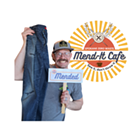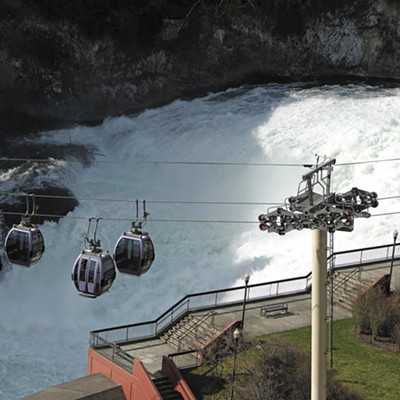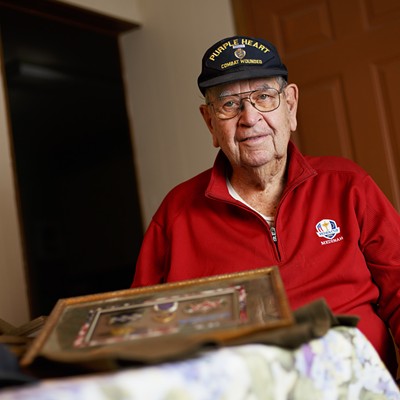An un-Sirti future
[
{
"name": "Broadstreet - Instory",
"component": "25846487",
"insertPoint": "4",
"requiredCountToDisplay": "4"
},{
"name": "Broadstreet - Empower Local",
"component": "27852456",
"insertPoint": "8",
"requiredCountToDisplay": "8"
},{
"name": "Broadstreet - Instory",
"component": "25846487",
"insertPoint": "12",
"requiredCountToDisplay": "12"
},{
"name": "Broadstreet - Instory - 728x90 / 970x250",
"component": "27852677",
"insertPoint": "18",
"requiredCountToDisplay": "18"
},{
"name": "Broadstreet - Instory",
"component": "25846487",
"insertPoint": "5th",
"startingPoint": "23",
"requiredCountToDisplay": "24",
"maxInsertions": 100
}
]
& & by Robert Herold & & & &
It has become an annual occurrence over at the legislative session in Olympia. Representatives from Spokane and SIRTI (for the uninitiated that's "Spokane Intercollegiate Research and Technology Institute, located at the Riverpoint Higher Education Complex) arrive hat in hand to ask for operating funds. These requests always come packaged in expressions of hope -- hope that with just a few more tax dollars, SIRTI will finally be off and running, after some $20 million that to date hasn't produced much. Give us one more chance.
To come right to the gloomy point, we are now in the good money following bad money stage of things. SIRTI was a bad idea from the outset. The operation should be terminated. The building could then be turned over to WSU's management, where it should be jointly reconfigured and redesigned as an academic space by the participating universities at Riverpoint.
SIRTI was to be a "place" where our several universities would get together and do research and technology. Business leaders saw these efforts resulting in ideas that could be incubated into new products. The concept was doomed from the outset, for it rested on three fundamental misconceptions regarding life within the academy:
* SIRTI presumed that academic scientists would come to this freestanding place, separate from their own offices, to do their research.
* SIRTI presumed that academic scientists do research for the purpose of product development.
* SIRTI presumed that academic scientists actually care about the economic development agenda of the local chamber of commerce and related organizations.
Taking these presumptions one at a time: First, academics do research where they do everything else, on campus. Why? Because that's where the resources are, that's where the libraries are, that's where the students live, that's where classes are taught and that's where the critical mass of intellectual exchange takes place.
Picture, if you can, a computer science professor down in Pullman. The clock strikes noon. He looks at his watch and says, "Got to run to SIRTI and do research." This was never going to happen.
Second, academics typically don't do research to accomplish the development and testing of a new product except as it contributes to a research project already underway. This is not to say that products don't emerge from academic efforts. They do. And in really large research universities, quite often such efforts spin off commercial endeavors, many of which have led to the kind of product development that our business leaders have in mind. But that said, product development, within the academy, usually comes as a byproduct. Academics (most of them anyway) have little interest in devising research and technology projects in response to the latest economic development agenda hatched down at the Chamber or the EDC. And the idea that you actually get faculty to spend time testing someone else's new product was, to put it charitably, inane.
The importance of the missing element in all this -- a doctoral granting research university -- can't be overstated. Universities, at the end of the day, are about education and training of students. Even large research universities such as the University of Washington. Students and faculty are brought together through academic programs. To get the kind of research that SIRTI needed, there had to be housed in SIRTI programs that would bring together professor and student. To push things into the product spin-off world, SIRTI ideally needed doctoral programs in the sciences and engineering.
SIRTI as a concept never had a prayer of succeeding. Faculty weren't going to come, and those who did were going to be occupied with teaching roles in keeping with their respective school's missions, none of which included doctoral programs in the necessary areas.
Founders of SIRTI were not entirely oblivious to these fundamental disconnects. Indeed, there was some question at the outset as to whether SIRTI should be affiliated with our universities. It was decided to make the association for a very pragmatic reason. Money for SIRTI through the Higher Education budget was thought to be easier to come by than money through the various channels associated with economic development.
Olympia never fell for the gag. Neither Eastern nor WSU were interested in redirecting any of its operating dollars, nor was our West Side-dominated legislature all that excited about pouring dollars into economic development through this obviously flawed operation.
But for a number of years, SIRTI could dodge all these difficult issues because Spokane's favorite congressman (and I don't mean George Nethercutt) managed to send large sacks of money courtesy of the Department of Defense. The dollars were supposed to provide the seed money for all those projects that SIRTI was supposed to accomplish with faculty that weren't there and programs that didn't exist.
The money went instead to fund the operating costs that weren't being funded, either by project successes or through the legislature. That gravy train ran out.
So, after a decade here we sit. We have a white elephant of a building that is designed to do who knows what (the inside reminds me of an empty Santa's workshop), and a budget that bleeds red ink.
Still our local business worthies won't give it up. Too much ego invested, perhaps. Too afraid to admit failure. Too desperate. Too much of business as usual.
Over they go to Olympia, hat in hand, one more time.
We do have options, should anyone be interested or willing to consider them. The state of Utah, more than a decade ago, engaged in a program called "Centers of Excellence." Through this program, state dollars were made available to selected university research efforts, on the condition that the professor involved would submit to the advice and council of a technology transfer specialist provided through the governor's office. The projects were selected in accordance with a priority list that reflected Utah's preferred economic future and linked that future with the strengths of the state's three major universities. Thus the Centers program looked primarily -- but not exclusively -- to Utah State for space hardware, to the University of Utah for bio-tech and to BYU for computer software. The governor's office reasoned that they would get the biggest bang for the buck if they would infuse dollars at the time that the research had reached the transfer stage of development. That is, the research had proved successful on its own terms, and now what?
The Utah program required only a few offices, a director, a secretarial staff and a small team of technology transfer specialists who knew what was going on in the academic labs up the street in Logan, in Salt Lake City and down the road in Provo.
That option remains for the taking.
It has become an annual occurrence over at the legislative session in Olympia. Representatives from Spokane and SIRTI (for the uninitiated that's "Spokane Intercollegiate Research and Technology Institute, located at the Riverpoint Higher Education Complex) arrive hat in hand to ask for operating funds. These requests always come packaged in expressions of hope -- hope that with just a few more tax dollars, SIRTI will finally be off and running, after some $20 million that to date hasn't produced much. Give us one more chance.
To come right to the gloomy point, we are now in the good money following bad money stage of things. SIRTI was a bad idea from the outset. The operation should be terminated. The building could then be turned over to WSU's management, where it should be jointly reconfigured and redesigned as an academic space by the participating universities at Riverpoint.
SIRTI was to be a "place" where our several universities would get together and do research and technology. Business leaders saw these efforts resulting in ideas that could be incubated into new products. The concept was doomed from the outset, for it rested on three fundamental misconceptions regarding life within the academy:
* SIRTI presumed that academic scientists would come to this freestanding place, separate from their own offices, to do their research.
* SIRTI presumed that academic scientists do research for the purpose of product development.
* SIRTI presumed that academic scientists actually care about the economic development agenda of the local chamber of commerce and related organizations.
Taking these presumptions one at a time: First, academics do research where they do everything else, on campus. Why? Because that's where the resources are, that's where the libraries are, that's where the students live, that's where classes are taught and that's where the critical mass of intellectual exchange takes place.
Picture, if you can, a computer science professor down in Pullman. The clock strikes noon. He looks at his watch and says, "Got to run to SIRTI and do research." This was never going to happen.
Second, academics typically don't do research to accomplish the development and testing of a new product except as it contributes to a research project already underway. This is not to say that products don't emerge from academic efforts. They do. And in really large research universities, quite often such efforts spin off commercial endeavors, many of which have led to the kind of product development that our business leaders have in mind. But that said, product development, within the academy, usually comes as a byproduct. Academics (most of them anyway) have little interest in devising research and technology projects in response to the latest economic development agenda hatched down at the Chamber or the EDC. And the idea that you actually get faculty to spend time testing someone else's new product was, to put it charitably, inane.
The importance of the missing element in all this -- a doctoral granting research university -- can't be overstated. Universities, at the end of the day, are about education and training of students. Even large research universities such as the University of Washington. Students and faculty are brought together through academic programs. To get the kind of research that SIRTI needed, there had to be housed in SIRTI programs that would bring together professor and student. To push things into the product spin-off world, SIRTI ideally needed doctoral programs in the sciences and engineering.
SIRTI as a concept never had a prayer of succeeding. Faculty weren't going to come, and those who did were going to be occupied with teaching roles in keeping with their respective school's missions, none of which included doctoral programs in the necessary areas.
Founders of SIRTI were not entirely oblivious to these fundamental disconnects. Indeed, there was some question at the outset as to whether SIRTI should be affiliated with our universities. It was decided to make the association for a very pragmatic reason. Money for SIRTI through the Higher Education budget was thought to be easier to come by than money through the various channels associated with economic development.
Olympia never fell for the gag. Neither Eastern nor WSU were interested in redirecting any of its operating dollars, nor was our West Side-dominated legislature all that excited about pouring dollars into economic development through this obviously flawed operation.
But for a number of years, SIRTI could dodge all these difficult issues because Spokane's favorite congressman (and I don't mean George Nethercutt) managed to send large sacks of money courtesy of the Department of Defense. The dollars were supposed to provide the seed money for all those projects that SIRTI was supposed to accomplish with faculty that weren't there and programs that didn't exist.
The money went instead to fund the operating costs that weren't being funded, either by project successes or through the legislature. That gravy train ran out.
So, after a decade here we sit. We have a white elephant of a building that is designed to do who knows what (the inside reminds me of an empty Santa's workshop), and a budget that bleeds red ink.
Still our local business worthies won't give it up. Too much ego invested, perhaps. Too afraid to admit failure. Too desperate. Too much of business as usual.
Over they go to Olympia, hat in hand, one more time.
We do have options, should anyone be interested or willing to consider them. The state of Utah, more than a decade ago, engaged in a program called "Centers of Excellence." Through this program, state dollars were made available to selected university research efforts, on the condition that the professor involved would submit to the advice and council of a technology transfer specialist provided through the governor's office. The projects were selected in accordance with a priority list that reflected Utah's preferred economic future and linked that future with the strengths of the state's three major universities. Thus the Centers program looked primarily -- but not exclusively -- to Utah State for space hardware, to the University of Utah for bio-tech and to BYU for computer software. The governor's office reasoned that they would get the biggest bang for the buck if they would infuse dollars at the time that the research had reached the transfer stage of development. That is, the research had proved successful on its own terms, and now what?
The Utah program required only a few offices, a director, a secretarial staff and a small team of technology transfer specialists who knew what was going on in the academic labs up the street in Logan, in Salt Lake City and down the road in Provo.
That option remains for the taking.



















